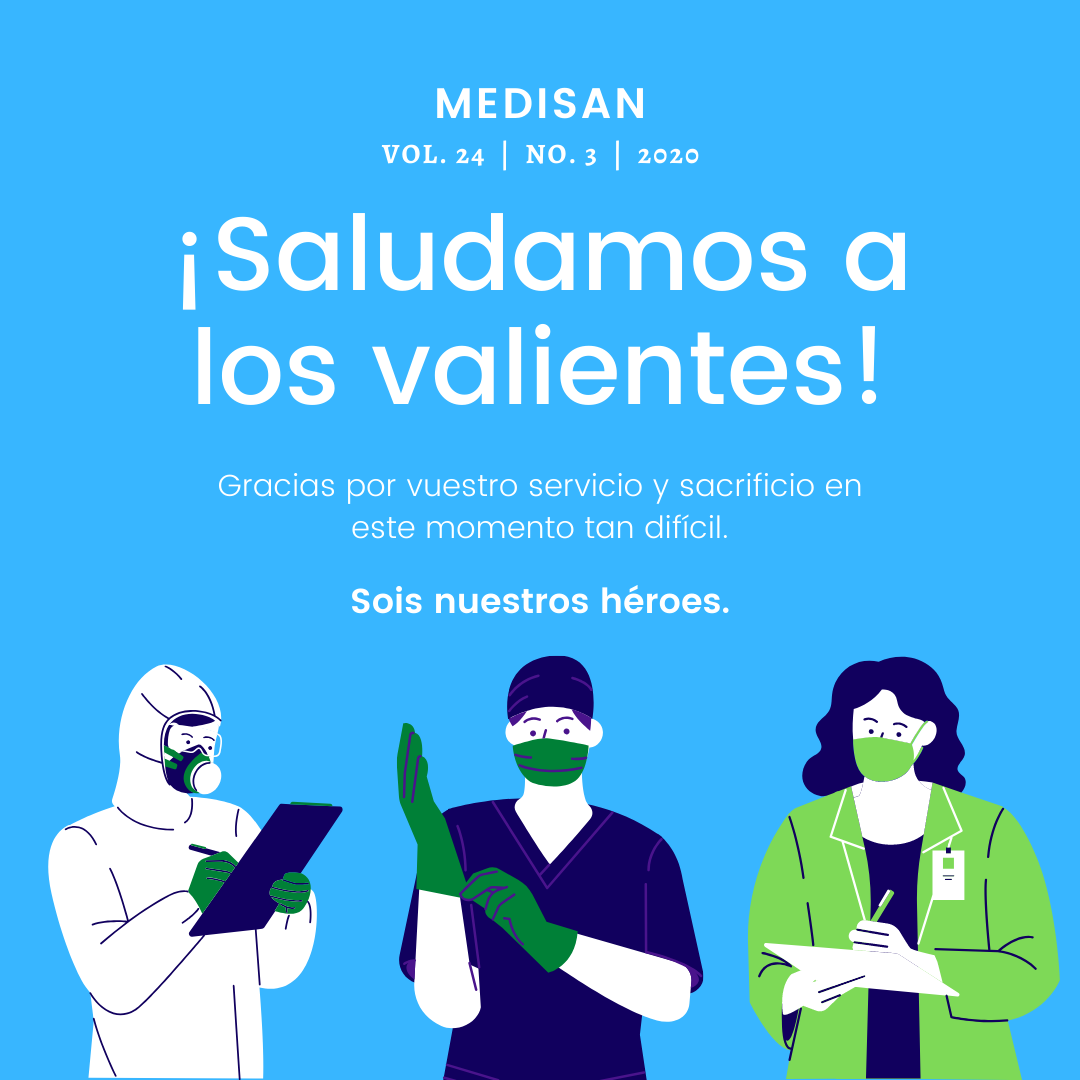Clinical, epidemiological and therapeutical characterization of children with recurrent respiratory papillomatosis
Keywords:
children, papillomavirus, recurrent papillomatosis, transvaginal childbirth.Abstract
Introduction: The recurrent respiratory papillomatosis is an uncommon disease of the airways that affects children and adults, caused by the papillomavirus.
Objective: To characterize children with recurrent respiratory papillomatosis from the clinical, epidemiologic and therapeutic points of view, as well as to evaluate their clinical course at short and mid terms.
Methods: An observational, longitudinal and prospective investigation of 40 children with recurrent respiratory papillomatosis was carried out, they were assisted in the Otolaryngology Service of Dr. Antonio María Béguez Cesar Teaching Southern Children Hospital in Santiago de Cuba, from January, 2010 to December, 2016.
Results: The patients included in the study represented 3.2 % of the total of admissions. The male sex prevailed (60.0 %); the average age was 8.6 ± 4 years. Statistical association existed between the anatomical localization of the lesions and the male sex; however, there was no such association with the age. The oropharyngeal (50.0 %) and laryngeal (42.5 %) localizations were those of more observance. The transvaginal childbirth was associated with the higher number of patients that presented the mentioned disorder (85.0 %) and the treatment with exeresis and Interferon was associated with the satisfactory clinical course in 95.8 % of those affected.
Conclusions: The clinical and epidemiological characteristics of patients with recurrent respiratory papillomatosis of this case material don't differ from the world epidemiological context, being an unusual observation entity, but not strange in the pediatrics services.
Downloads
References
2. Sánchez Torices MS, Corrales Millan R, Hijona Elosegui JJ. Colonización orofaríngea perinatal por el virus del papiloma humano. Acta Otorrinolaringológica Española. 2016 [citado 21/05/2019];67(3):135-41. Disponible en: https://www.elsevier.es/es-revista-acta-otorrinolaringologica-espanola-102-articulo-colonizacion-orofaringea-perinatal-por-el-S0001651915000928
3. Rosenbaum A, Lagos A, Napolitano C, Badía P. Vacuna contra el virus papiloma humano como tratamiento para la papilomatosis respiratoria recurrente. Rev. Otorrinolaringol. Cir. Cabeza Cuello. 2018 [citado 21/05/2019];78(3). Disponible en: https://scielo.conicyt.cl/scielo.php?script=sci_arttext&pid=S0718-48162018000300326
4. Arriola López A, Castro Hernández E. Papilomatosis laríngea recurrente. Reporte de caso. Acta Pediátrica Hondureña. 2015; 6 (2): 495-8.
5. Marrugo Pardo GE, Gómez Rodríguez DL. Cidofovir intralesional para el tratamiento de la papilomatosis respiratoria recurrente revisión sistemática de la literatura. Rev Fac Med. 2005 [citado 21/05/2019];53(3):169-77. Disponible en: http://www.scielo.org.co/scielo.php?script=sci_arttext&pid=S0120-00112005000300003&lng=en
6. Bello de Alford M, Caibe G. Tipificación del virus del papiloma humano en papilomatosis laríngea recurrente juvenil. RFM. 2001 [citado 24/05/2019];24(1):62-5. Disponible en: http://ve.scielo.org/scielo.php?script=sci_arttext&pid=S0798-04692001000100009&lng=es
7. Buller Viqueira E, Cabello Pulido J, Buller Viqueira E. Papiloma en úvula. Rev Clin Med Fam. 2015 [citado 24/05/2019];8(3). Disponible en: http://scielo.isciii.es/scielo.php?script=sci_arttext&pid=S1699-695X2015000300012
8. Harris Ricardo J, Rebolledo Cobos M, Fortich Mesa N. Papiloma bucal en pacientes pediátricos: Potencial transmisión materna. Rev Clin Med Fam. 2012 [citado 24/05/2019];5(1). Disponible en: http://scielo.isciii.es/scielo.php?script=sci_arttext&pid=S1699-695X2012000100008&lng=es&nrm=iso&tlng=es
9. Contreras W, Venegas B. Virus papiloma humano en cáncer oral y orofaríngeo. Revisión de la Literatura. Int J Odontostomat. 2015 [citado 24/05/2019];9(3). Disponible en: https://scielo.conicyt.cl/scielo.php?script=sci_arttext&pid=S0718-381X2015000300012
10. Cháirez Atienzo P, Vega Memíje ME, Zambrano Galván G, García Calderón AG, Maya García IA, Cuevas González JC. Presencia del virus papiloma humano en la cavidad oral: Revisión y actualización de la literatura. Int J Odontostomat. 2015 [citado 26/05/2019];9(2). Disponible en: https://scielo.conicyt.cl/scielo.php?script=sci_arttext&pid=S0718-381X2015000200009
11. Limongi L, Pérez C, Jiménez C. Prevalencia de la infección por virus papiloma humano en la cavidad bucal en pacientes pediátricos. Acta Odontol Venez. 2006 [citado 26/05/2019];44(2):277-83. Disponible en: http://ve.scielo.org/scielo.php?script=sci_arttext&pid=S0001-63652006000200020&lng=es
12. Castillo Karina H, de los Ángeles Caro V, González Blanco M, Acosta L, Correnti M, Suárez J. Papilomatosis laríngea juvenil y su relación con la infección genital por virus de papiloma humano durante el embarazo. Rev Obstet Ginecol Venez. 2015 [citado 26/05/2019];75(4):260-8. Disponible en: http://ve.scielo.org/scielo.php?script=sci_arttext&pid=S0048-77322015000400006&lng=es
13. Izaguirre D, Rosas MA, Parra J, Sánchez B. Transmisión materno fetal del VPH. Evolución clínica y nasofibroscópica. Bol Venez Infectol. 2017;28(2):109-19.
14. Pérez Rodríguez L, Utrera Díaz G, González González del Pino MM, Macías Ortiz L. Cáncer de orofaringe asociado al virus del papiloma humano. Presentación de un caso. Medisur. 2013 [citado 26/05/2019];11(5):557-62. Disponible en: http://scielo.sld.cu/scielo.php?script=sci_arttext&pid=S1727-897X2013000500012&lng=es
15. Barrera Rivera D, Arnold Alfonso ML, Peña Casal CL, Alfonso Rodríguez J. Papilomatosis laríngea recurrente con seguimiento multidisciplinario. A propósito de un caso. Rev Med Electrón. 2016 [citado 26/05/2019];38(4):595-601. Disponible en: http://scielo.sld.cu/scielo.php?script=sci_arttext&pid=S1684-18242016000400009&lng=es
Published
How to Cite
Issue
Section
License
All the articles can be downloaded or read for free. The journal does not charge any amount of money to the authors for the reception, edition or the publication of the articles, making the whole process completely free. Medisan has no embargo period and it is published under the license of Creative Commons, International Non Commercial Recognition 4.0, which authorizes the copy, reproduction and the total or partial distribution of the articles in any format or platform, with the conditions of citing the source of information and not to be used for profitable purposes.





